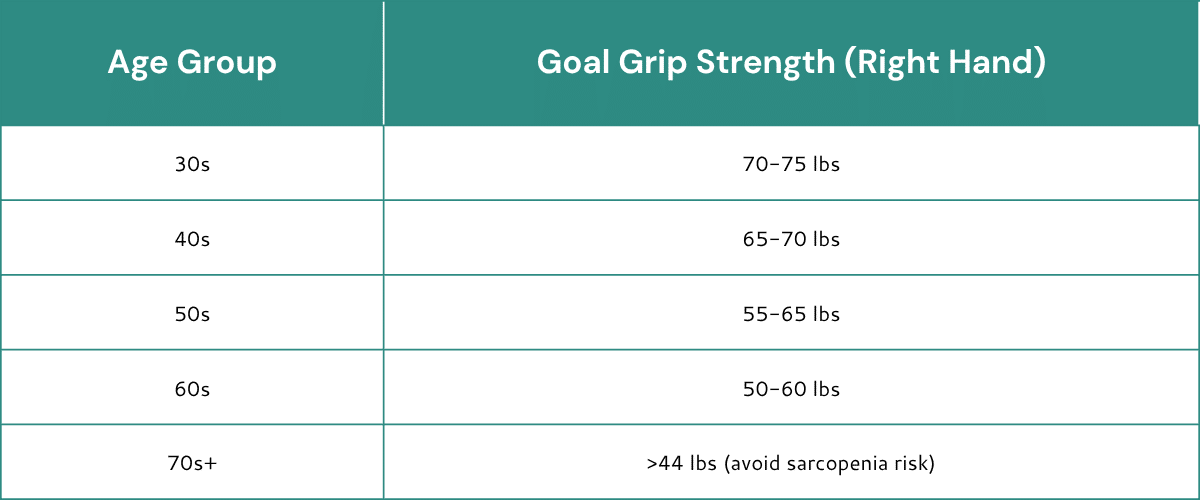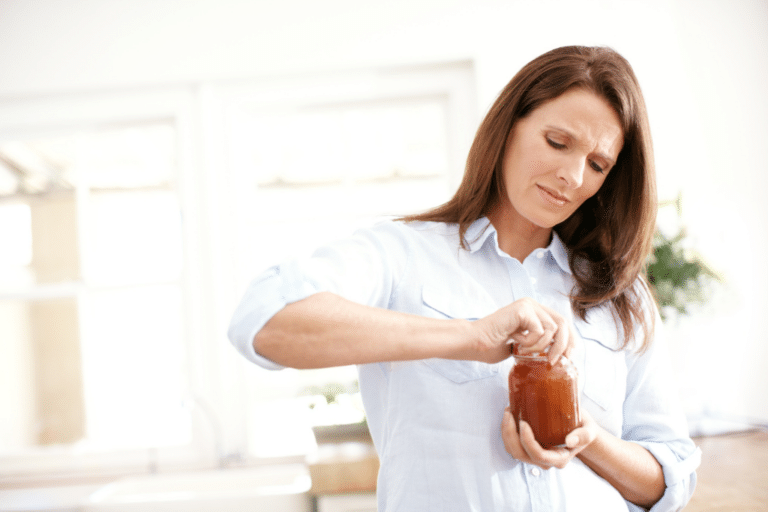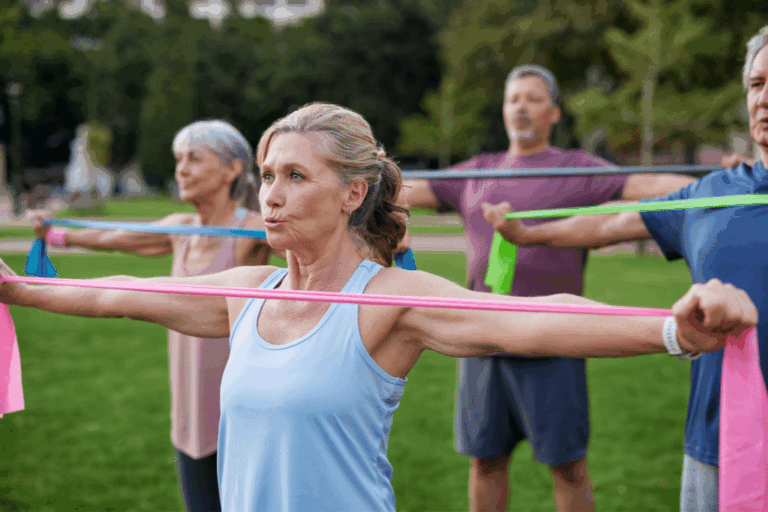You probably don’t spend much time thinking about your grip strength. Unless you’ve been struggling to open a jar of salsa or noticed your hands fatiguing while carrying groceries, it might not even be on your radar.
But here’s the truth: grip strength is one of the most important predictors of overall health as we age, especially for women.
Yep, it’s not just about firm handshakes or opening pickle jars. Grip strength is linked to mobility, independence, metabolic health, and even how long you live. And yet, most of us don’t realize we’re losing it… until it’s already slipping through our fingers (literally).
What Exactly Is Grip Strength—and Why Should You Care?
Grip strength is a measure of how much force you can generate with your hand and forearm muscles. But it’s not just a test of hand strength—it’s a surprisingly powerful proxy for overall muscle quality, nervous system function, and aging resilience.
Research shows that low grip strength is associated with increased risk of falls, frailty, cognitive decline, cardiovascular disease, and all-cause mortality. In fact, grip strength may predict your healthspan more accurately than blood pressure.
👉 In one large study of over 140,000 people across 17 countries, every 11-pound (5 kg) decrease in grip strength was associated with a 17% higher risk of death from heart disease, stroke, or any cause (Leong et al., 2015).
Grip Strength in Women: The (Worrying) Numbers
Here’s where it gets more concerning: women start with lower grip strength than men and lose it faster post-menopause.
- The average peak grip strength for women in their 30s is around 70-75 pounds.
- By their 60s, many women are down to 50-55 pounds or less.
- A grip strength of less than 44 pounds (20 kg) is considered low for women over 60 and is associated with increased disability risk.
And yet most women (and their doctors) don’t track it at all.

Want relief from the symptoms of perimenopause?
You’re in the right place.
You don’t have to suffer. I can help you balance your hormones and get your mojo back!
How Weakness Shows Up—Before You Realize It’s a Problem
Loss of grip strength doesn’t just show up in the gym. It creeps in quietly, often masquerading as:
- Trouble opening jars or carrying groceries
- Hand fatigue during cooking, gardening, or typing
- Avoidance of certain yoga poses or exercises
- Feeling “unsteady” when hiking or using trekking poles
- Loss of confidence in your physical capability
If you’ve ever handed a jar to someone else because “it’s too tight,” you’re not alone—but you might also be getting an early signal to take action.
How Grip Strength Is Measured (and How You Can Test It at Home)
In clinical settings, grip strength is measured with a hand dynamometer—a device you squeeze as hard as possible. But you don’t need to wait for a doctor’s visit.
At-home options:
- Buy your own dynamometer: These are inexpensive on Amazon or fitness sites.
- Use the “jar test”: Can you easily open a new jar without strain?
- Dead hang test: Can you hang from a pull-up bar for at least 15–30 seconds?
- Grocery carry test: Can you carry two full bags from the car to the house without setting them down?
These are informal, of course, but they give you a sense of where you are.
Age-Related Grip Strength Goals for Women
These are general targets based on research and functional independence:

Even if you’re not close to these numbers, improvement is always possible.
How to Improve Grip Strength (No Gym Required)
Grip strength responds beautifully to resistance training, especially exercises that target the hands, wrists, and forearms. Here’s what works:
Grip-Specific Exercises:
- Farmer’s carries (with heavy dumbbells or grocery bags)
- Dead hangs from a pull-up bar
- Plate pinches (hold two weight plates together between your fingers)
- Wrist curls and extensions
Functional & Daily Life Additions:
- Use hand grippers or squeeze a stress ball while watching TV
- Do heavy carries when unloading groceries
- Garden or knead dough with intention (yes, baking counts!)
And most importantly? Lift heavy things. Regularly. Don’t shy away from strength training. It’s the closest thing we have to a fountain of youth, especially for your muscles.
Final Thoughts: Grip Strength Is a Lifeline
Your ability to grab, hold, and carry isn’t just about convenience—it’s a reflection of your metabolic resilience, bone health, and even longevity.
So the next time you open that jar or swing a kettlebell, give yourself a high five (with a firm grip). You’re investing in the kind of independence that matters more with every passing year.
References
- Leong, D. P., et al. (2015). Prognostic value of grip strength: findings from the Prospective Urban Rural Epidemiology (PURE) study. The Lancet, 386(9990), 266–273.
- Bohannon, R. W. (2019). Grip Strength: An Indispensable Biomarker for Older Adults. Clinical Interventions in Aging, 14, 1681–1691.
- Dodds, R. M., et al. (2014). Grip strength across the life course: normative data from twelve British studies. PLOS ONE, 9(12), e113637.
Dr. Anna Garrett is a menopause expert and Doctor of Pharmacy. She helps women who are struggling with symptoms of perimenopause and menopause find natural hormone balancing solutions so they can rock their mojo through midlife and beyond. Dr. Anna is the author of Perimenopause: The Savvy Sister’s Guide to Hormone Harmony. Order your copy at www.perimenopausebook.com.
Dr. Anna is available for 1-1 consultation. Find out more at www.drannagarrett.com/lets-talk




